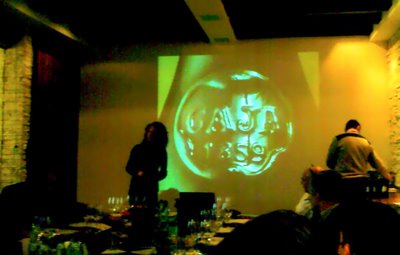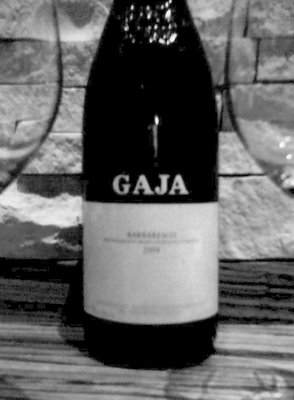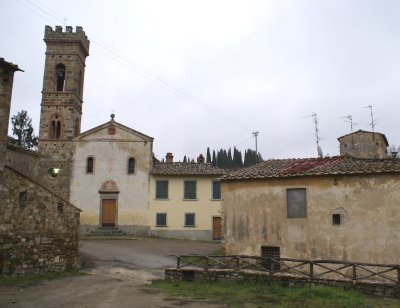Tuning for Sangiovese
-744475.JPG)
Later today I head off for Chianti, on a long-awaited tour of one of my very favourite wine regions. Three and a half days of drinking little else than Sangiovese.
Usually before such regime, I like to tune my palate to a given grape variety or wine style, and open a few bottles from my cellar to get the ‘feel’. Instead of a Chianti, though, I opted for a wine from Montalcino.
It is not a Brunello though, but a rare animal – a Rosso di Montalcino Riserva. (Well in all truth, the latter word doesn’t appear on the label). Rosso is often a Montalcino winery’s simplest red, produced from grapes that don’t make it into Brunello: either the vineyards are in an inferior position, the vines too young, or the quality just isn’t there in a particular vintage. But this wine comes from the single vineyard of La Caduta. (Single crus are usually used to make Brunello, but this one is an exception). The wine is aged like a Rosso, with 12 months in wood, although instead of large 6000-liter Slavonian oak casks, medium-sized barrels of 2000 l were used.
Caparzo has long played in the top league of Brunello. I remember that in my early days of tasting this appellation – when vintages such as 1993, 1994, 1995 and 1996 were on the market – it was one of the most reliable and good value Brunellos. And their cru, La Casa, is certainly among the very best. A hugely concentrated, tannic, brooding wine, it is best opened after at least a decade. Both 1999 and 2000 are excellent, and I recently tasted the 1995 which should still wait. As for the Brunello normale, latest vintages have been a mixed batch. 2001 and 2002 I found puzzling, 2003 is back on track. Caparzo changed hands a few years ago, and recently they have taken over their neighbour and former rival, Altesino. Perhaps this period of ownership change and reinvestment caused a certain drop in quality.
Anyhow, I cellared this Rosso di Montalcino Vigna La Caduta 1999 since release, and it is now drinking delightfully well. Served at cellar temperature and poured without decanting, it instantly charms me with a sweet, sensual bouquet which is mature à point. Typically of Montalcino it shows a rather fat, sweet-balsamic profile. It has no great depth or dimension (especially for 1999, which a stellar vintage, unsurpassed by any until at least 2005), and after 9 years of ageing the difference in structure with a Brunello is evident. There is even the merest hint of greenness on the finish, although the acidity is ripe and integrated. But while intellectually it is criticisable, sensually it shows the best characteristics of Sangiovese: intense perfume, sweet fruit, freshness, texture, length and class. A good promise for the next three days.
-745413.JPG)




